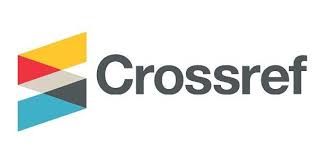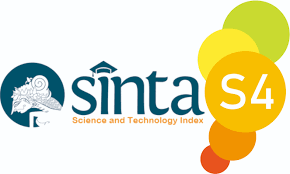Can Keyboarding Skills Improve Student Performance and Engagement?
DOI:
https://doi.org/10.26740/joaep.v3n3.p190-203Keywords:
Keyboarding skills, student performance, student engagementAbstract
Lecturers must create innovative and engaging learning experiences that encourage students to actively participate in all aspects of the learning process so that student's academic performance can improve. This study tested the effectiveness of the blind system method assisted by 10astfingers learning media in improving students' performance and engagement. This study used a treatment-by-level design (T-LD). The subject of this study were 73 undergraduate students of business administration at Politeknik Balekambang Jepara. The data were collected through practicum tests and questionnaires. An independent sample test was used for data analysis This study showed that 10fastfingers learning media can improve students' cognitive and psychomotor performance. Thus, this medium is effective as a keyboard learning medium for improving student performance. The results of this study showed that 10fastfingers media were able to increase student participation in learning activities. Therefore, it can be concluded that use of 10fastfingers media can improve academic performance and student engagement.
Downloads
References
Adu-Gyamfi, K. (2014). Using the activity method to enhance students' performance in energy transformation. International Journal of Research Studies in Educational Technology, 3(1). https://doi.org/10.5861/ijrset.2014.594
Agamber, S. T., Achor, E. E., & Ajayi, V. O. (2019). Enhancing Students' Motivation and Self-Efficacy Belief in Solving Biology Related Problems using Frequent Practical Work. In ICSHER JOURNAL (Vol. 4, Issue 2). www.icshcer.org.ng
Agustiani, S. (2023). Peningkatan Hasil Belajar Menerapkan Pengetikan (Keyboarding) pada Mata Pelajaran Teknologi Perkantoran Melalui Strategi Peer Lessons Siswa Kelas X OTKP 2 SMK Negeri 1 Ponorogo. 11(1). http://journal.umpo.ac.id/index.php/dimensi/index
Ali, M. M., & Hassan, N. (2018). Defining Concepts of Student Engagement and Factors Contributing to Their Engagement in Schools. Creative Education, 09(14), 2161–2170. https://doi.org/10.4236/ce.2018.914157
Ariawan, K. S., Gede, D., Divayana, H., Wayan, P., & Suyasa, A. (2019). Pengaruh media pembelajaran typing skill terhadap prestasi belajar siswa di Kelas X Jurusan Administrasi Perkantoran SMK Negeri 2 Singaraja. Kumpulan Artikel Mahasiswa Pendidikan Teknik Informatika (KARMAPATI), 8(3).
Arikunto, S. (2013). Research Procedure: A Practical Approach. Rineka Cipta.
Armiati, & Rahmidani, R. (2019). Peningkatan Kecepatan Mengetik dengan Teknik Blind System melalui Pemanfaatan Program Typing Master. Jurnal Pengabdian Kepada Masyarakat (Dikemas), 3(2), 75–83.
Arsa Adilla, M., & Windriyani, P. (2022). Pengembangan Typing Game sebagai Sarana Melatih Meningkatkan Kecepatan Mengetik Berbasis Desktop. Kalbisiana: Jurnal Mahasiswa Institut Teknologi Dan Bisnis Kalbis, 8(1), 400–415.
Asare, S., Owusu-Mintah, C., & Esther, A. (2020). Improving the Keyboarding Skills of Basic School Learners Using the Colored keyboard. A Case of a Ghanaian Basic School. In Article in Journal of Research on Technology in Education. https://www.researchgate.net/publication/341877876
Blasco-Arcas, L., Buil, I., Hernández-Ortega, B., & Sese, F. J. (2013). Using clickers in class. the role of interactivity, active collaborative learning and engagement in learning performance. Computers and Education, 62, 102–110. https://doi.org/10.1016/j.compedu.2012.10.019
Cerni, T., Longcamp, M., & Job, R. (2016). Two thumbs and one index: A comparison of manual coordination in touch-typing and mobile-typing. Acta Psychologica, 167, 16–23. https://doi.org/10.1016/j.actpsy.2016.03.007
Chang, D.-F., Chien, W.-C., & Chou, W.-C. (2010). Meta-analysis approach to detect the effect of student engagement on academic achievement. ICIC Express Letters ICIC International, 10(10). https://www.researchgate.net/publication/309407873
Chowdhry, S., Sieler, K., & Alwis, L. (2014). A Study of the Impact of Technology-Enhanced Learning on Student Academic Performance. Journal of Perspectives in Applied Academic Practice, 2(3). https://doi.org/10.14297/jpaap.v2i3.111
Daniels, S. (2020). Understanding Students' Typing Skills: Evaluating the Effects and Efficiency of a Typing Intervention for Elementary School Students [University of Tennessee]. https://trace.tennessee.edu/utk_graddiss
Dinh, T. C., & Nguyen, P. B. N. (2022). Impact of Internet Self-Efficacy and Self-Regulated Learning on Satisfaction and Academic Achievement in Online Learning: A Case Study in Vietnam. International Journal of Emerging Technologies in Learning, 17(16), 269–288. https://doi.org/10.3991/ijet.v17i16.33819
Dixson, M. D. (2015). Measuring Student Engagement in the Online Course: The Online Student Engagement Scale (OSE). Online Learning, 19(4), 1–15.
Dufrene, C., & Young, A. (2014). Successful debriefing - Best methods to achieve positive learning outcomes: A literature review. Nurse Education Today, 34(3), 372–376. https://doi.org/10.1016/j.nedt.2013.06.026
Gaižiūnienė, L., Janiunaite, B., & Horbacauskiene, J. (2020). Teacher Activities in Adaptation of Innovative Study Methods at University: Theoretical and Practical Implications. In Theoretical and Practical Approaches to Innovation in Higher Education (pp. 113–137). https://doi.org/10.4018/978-1-7998-1662-1.ch007
Gunuc, S., & Kuzu, A. (2015). Student engagement scale: development, reliability and validity. Assessment and Evaluation in Higher Education, 40(4), 587–610. https://doi.org/10.1080/02602938.2014.938019
Haward, T. (2020). How do students engage with visual sources in the teaching and learning of History? British Educational Research Journal, 46(2), 364–378. https://doi.org/10.1002/berj.3582
Hod, Y., & Katz, S. (2020). Fostering highly engaged knowledge building communities in socioemotional and sociocognitive hybrid learning spaces. British Journal of Educational Technology, 51(4), 1117–1135. https://doi.org/10.1111/bjet.12910
Hodgson, Y., Benson, R., & Brack, C. (2013). Using action research to improve student engagement in a peer-assisted learning programme. Educational Action Research, 21(3), 359–375. https://doi.org/10.1080/09650792.2013.813399
Ikhsananto, A., & Sutirman, S. (2018). The Effectiveness of Rapid Typing Software and Module for Improving 10-Finger Typing Skills. Dinamika Pendidikan, 13(2), 228–237. https://doi.org/10.15294/dp.v13i2.15540
Isran Rasyid Karo-Karo, & Rohani. (2018). Manfaat media dalam pembelajaran. AXIOM, 7(1), 90–96.
Lei, H., Cui, Y., & Zhou, W. (2018). Relationships between student engagement and academic achievement: A meta-analysis. Social Behavior and Personality, 46(3), 517–528. https://doi.org/10.2224/sbp.7054
Lin, S. H., & Huang, Y. C. (2018). Assessing College Student Engagement: Development and Validation of the Student Course Engagement Scale. Journal of Psychoeducational Assessment, 36(7), 694–708. https://doi.org/10.1177/0734282917697618
Lubbe, E., & Mentz, E. (2006). The relationship between keyboarding skills and self-regulated learning Technology-supported cooperative learning to enhance Self-Directed Learning View project Cooperative learning View project. Article in South African Journal of Education. https://doi.org/10.4314/saje.v26i2.25070
Lusiana, B., & Maryanti, R. (2020). The Effectiveness of Learning Media Used During Online Learning. Media Pendidikan, Gizi, Dan Kuliner, 9(2), 81–92. https://doi.org/10.17509/xxxx.vxix
Mariskha Z., Alhadi, E., & Andriyani, T. (2016). Penerapan program typing master dalam meningkatkan kecepatan dan ketelitian pengetikan 10 jari buta. Jurnal Ilmiah Orasi Bisnis 2, 16, 52–65.
Marwan, & Wardani, M. W. (2023). Peningkatan Kemampuan Mengetik Siswa Melalui Penggunaan Aplikasi Typing Master Sebagai Media Pembelajaran. Jurnal Ecogen , 6(1), 143–155. https://doi.org/10.24036/jmpe.v
Marwan, & Wira Wardani, M. (2023). Peningkatan Kemampuan Mengetik Siswa Melalui Penggunaan Aplikasi Typing Master Sebagai Media Pembelajaran. Jurnal Ecogen , 6(1), 143–155. https://doi.org/10.24036/jmpe.v
McInerney, P., & Green-Thompson, L. P. (2019). Theories of learning and teaching methods used in postgraduate education in the health sciences: A scoping review. In JBI Database of Systematic Reviews and Implementation Reports. Lippincott Williams and Wilkins. https://doi.org/10.11124/JBISRIR-D-18-00022
Moeller, B., & Reitzes, T. (2011). Integrating Technology with Student-Centered Learning. Nellie Mae Education Foundation. www.nmefdn.orgacknowledgements
Musa, M., Sukmawati, E., Mahendika, D., Muhammadiyah Kupang, U., H Ahmad Dahlan, J. K., Putih, K., Oebobo, K., Kupang, K., Tenggara Timur, N., Negeri Gorontalo, U., Jend Sudirman No, J., Timur, D., Kota Tengah, K., Gorontalo, K., Serulingmas, S., Raya Maos No, J., Cilacap, K., Tengah, J., Tinggi Teknologi Bontang, S., … Timur, K. (2023). The Relationship between Students' Spiritual and Emotional Intelligence with Subjects Learning Outcomes. Journal on Education, 05(04).
Ninghardjanti, P., & Yuwantiningsih, A. (2018). Peningkatan Kecepatan Mengetik 10 Jari Melalui Penerapan Metode DrillDan Resitasi. Prosiding Seminar Nasional Pendidikan Administrasi Perkantoran (SNPAP), 7–14. www.snpap.fkip.uns.ac.id
Ogunsakin, R. E., Moyo, S., Oludayo, Olugbara, O., & Israel, C. (2021). Relating Student Engagement Indicators to Academic Performance Using Multiple Correspondence Analysis. Cybernetics and Information Technologies, 21(1), 87–102. https://doi.org/10.2478/cait-2021-0007
Okwuduba, E. N., & Okigbo, E. C. (2018). Effect of teaching methods on students' academic performance in chemistry in nigeria: meta-analytic review. Bulgarian Journal of Science and Education Policy (BJSEP), 12(2), 418–425. https://www.researchgate.net/publication/330041839
Pebriani, D., & Oktarina, N. (2018). Pengaruh disiplin, fasilitas, dan motivasi belajar terhadap kecepatan mengetik manual. Economic Education Analysis Journal, 7(2), 568–574. http://journal.unnes.ac.id/sju/index.php/eeaj
Prianto, A. (2023). Keterlibatan mahasiswa dalam pembelajaran berbasis MBKM dalam memperkuat kecakapan kerja utama. 5th Conference on Research and Community Services STKIP PGRI Jombang, 1–18.
Rozi, U. Al, Indrawati, C. D. S., & Widodo, J. (2018). Pemanfaatan program aplikasi typing master untuk meningkatkan kecepatan mengetik siswa SMK Wikarya Karanganyar Tahun 2018/2019. JIKAP: Jurnal Informasi Dan Komunikasi Administrasi Perkantoran, 2(4), 89–101.
Senior, I. A. A., Junior, I. A. A., Harunah, L., Darkowah, J. A.-, & Kyerefour, W. (2020). Using practical technique in improving students typing skills. Education, Sustainability And Society, 3(1), 27–30. https://doi.org/10.26480/ess.01.2020.27.30
Stevens, D. P., Fontenot, G., Stevens, D. P., & Fontenot, G. (2017). Measuring clicker impact on student perceptions of course and instructor. In Int. J. Innovation and Learning (Vol. 21, Issue 1).
Sulastri, T. (2014). Analisis mengetik cepat 10 jari menggunakan teknologi komputer berbasis aplikasi software rapidtyping. JURNAL LPKIA, 4(2), 13–19. http://www.rapidtyping.com.
Supriyadi, E., Sofiana, M., Wahyuni, R., Studi, P., & Bisnis, A. (2019). Pelatihan Pengenalan Aplikasi Perkantoran (Typing Master dan Microsoft Word) Bagi Remaja Karang Taruna RW. 08 Kelurahan Cinere Kecamatan Cinere Depok Jawa Barat. Jurnal Komunitas: Jurnal Pengabdian Kepada Masyarakat, 2(1), 100–104. http://ojs.stiami.ac.id
Waheed, H., Hassan, S. U., Aljohani, N. R., Hardman, J., Alelyani, S., & Nawaz, R. (2020). Predicting academic performance of students from VLE big data using deep learning models. Computers in Human Behavior, 104. https://doi.org/10.1016/j.chb.2019.106189
Weigelt Marom, H., & Weintraub, N. (2015). The effect of a touch-typing program on keyboarding skills of higher education students with and without learning disabilities. Research in Developmental Disabilities, 47, 208–217. https://doi.org/10.1016/j.ridd.2015.09.014
Downloads
Published
How to Cite
Issue
Section
 Abstract views: 784
,
Abstract views: 784
, PDF Downloads: 792
PDF Downloads: 792











